The impacts of rearing and stocking non-native fish into watersheds where they don’t belong are well understood: undue competition for limited resources, hybridization, predation — the list goes on. In the American West, we’ve seen how introduced brook trout outcompete native cutthroat trout and eventually take over; or how rainbow trout mingle with native cutthroat trout during the spring spawn and produce a fertile hybrid that slowly eats away at native fish genetics.
But even attempts to boost fish native stocks by raising genetically “appropriate” native fish and then releasing them into watersheds where they are native might be causing harm to native fish born and reared in the wild. According to a new study led by Akira Terui, a biology professor at the University of North Carolina at Greensboro, efforts to boost fish populations by introducing captive-bred fish of the same species into the wild has a negative effect on the native fish population.
The new study backs up assertions that, in the United States, efforts to boost, enhance or rebuild stocks of anadromous fish, like steelhead and salmon, by rearing and releasing native fish are generally fruitless and, in some cases, inflict more harm than good.
“The massive release of captive-bred native species (‘intentional release’) is a pervasive method to enhance wild populations of commercial and recreational species,” the study reads. “However, such external inputs may disrupt the sensitive species interactions that allow competing species to coexist, potentially compromising long-term community stability.”
Using long-term data gathered from salmon reared and released in the same streams as one of the foundational elements in the study, Terui’s study shows that, over time, the continued “enhancement” of hatchery-reared fish created a less-robust population of fish.
“Stream fish communities showed greater temporal fluctuations and fewer taxonomic richness in rivers with the intensive release of hatchery salmon—a major fishery resource worldwide,” the study reads. “Our findings alarm that the current overreliance on intentional release may accelerate global biodiversity loss with undesired consequences for the provisioning of ecosystem services.”
The study took into account important factors, like salmon growth rate, competition and the carrying capacity of a watershed, and found that stocking hatchery-reared fish on top of a naturally producing fishery largely serves to destabilize the population.
“The destabilizing effect emerges because intentional release affects the balance of species interactions that underpins community stability,” Terui’s study reads. “The intentional release is externally controlled, and the number of releases is not subject to density-dependent regulation. Therefore, released individuals impose additional intra- and interspecific competition that interferes with the ecological process producing overyielding.”
Show the findings of this study to any salmon or steelhead conservation advocate on the West Coast or even north into western Canada and Alaska, and you’ll likely get an emphatic head nod and maybe even a sarcastic, “Well, duh.”
For years, power producing coops and government agencies have tried to rebuild or enhance salmon and steelhead in the Northwest simply by adding in hatchery reared fish, even when existing populations are generally healthy. In instances where populations are dwindling — e.g., Snake River salmon and steelhead — the problem isn’t that there are fewer fish. The problem lies with the overall habitat health, largely due to the fact that there are eight fish-killing dams lying between the Pacific Ocean and the natal spawning waters in the upper Snake Basin. Adding more fish has never worked, and for a number of reasons.
First, the habitat in its present state simply can’t support the numbers of hatchery fish introduced to the system. Second, the introduced fish are basically genetic clones — they lack the subtle natural triggers found in wild-born fish that contribute to the “portfolio effect,” or the ability of wild salmon and steelhead to survive and rebuild naturally because not all fish return to the rivers at exactly the same time. Some steelhead, for instance, start their migration up the Columbia River in July or August, while others wait until October. If one of those “runs within the run” is wiped out by, say, a hot spell that cooks them in the reservoir above Bonneville Dam, another “portfolio asset” of fish is set to come on the heels of the failed run. Hatchery fish don’t do that — they tend to migrate en masse.
Terui’s study does address the conservation angle, albeit modestly. And, as noted above, many conservation efforts (like stocking of hatchery-reared salmon and steelhead) don’t take a watershed's overall carrying capacity into account.
“Indeed, non-negligible numbers of projects seem to release captive-bred individuals into unsuitable habitats with compromised carrying capacities,” Terui’s study reads. “Our analysis suggests that such programs could rather impair biodiversity without noticeable demographic benefit to the enhanced species. Pre-release examination and restoration of environmental capacity may be key to successful release programs with minimal impacts on other community members.”
Of course, that again illustrates the problem with salmon and steelhead in the Columbia and Snake basins — until the dams come out, salmon and steelhead will continue their slow, painful march toward extinction.
But Terui’s study, while germane to the overall challenges facing salmon and steelhead, likely better applies to instances where salmon populations are generally healthy. The study was conducted in Japan on a number of historic masu salmon streams, all independent of one another until they reach the ocean. There is a data set on these streams that stretches back to the 1950s that includes stocking records. According to the study, some streams receive stocked fish regularly, while others have been intentionally left alone. This, according to Terui, set the stage for a “natural experiment” to determine the effects of hatchery plantings atop existing fish.
“As predicted, stream fish communities showed greater temporal fluctuations at sites with the intensive release,” the study reads. “The effect was striking in its magnitude, almost doubling the (fluctuations) at the highest release level. Our analysis strongly supported the positive relationship between the (fluctuations) and the number of ‘effective’ releases.”
In other words, population numbers, reproductive success and the overall health of the fishery was all over the map on streams where fish were regularly planted. “Control” streams that didn't have hatchery “enhancements” sported fisheries that were generally healthier and more stable.
Where could the results be put to work in the fisheries world? Consider the generally healthy populations of pink salmon in the north Pacific. Even though the fishery is healthy, the state of Alaska annually releases 1.8 billion pink salmon fry. Asian countries add an additional 3 billion fish.
The result? According to biological oceanographer Sonia Batten of Canada's Marine Biological Association, there might be too many pinks in the sea — the carrying capacity question raised by Terui’s study could be coming home to roost. She told Phys.org in 2019 that the overabundance of pink salmon might be causing the every-other-year crashes of zooplankton in the North Pacific (not coincidentally, according to Batten, pinks return to spawn in greater numbers every other). While it may seem like a harmless side effect of a very healthy fishery, consider, too, that sockeye, chinook, coho and chum salmon also depend on zooplankton while at sea, either directly as food or as their food’s food. And, of course, other creatures depend on that healthy balance in the ecosystem, too — everything from orcas and salmon sharks to sea lions and humpback whales depend, either directly or indirectly, on zooplankton in the ocean.
While Terui’s study is much smaller in scope, it does show just how connected the ocean’s fisheries are, and how introducing more fish also introduces some level of biological chaos that might have impacts far beyond those initially intended.
Terui was joined in the study by Hirokazu Urabe of the Salmon and Freshwater Fisheries Research Institute; Masayuki Senzaki of Hakkaido University; and Bungo Nishizawa of the National Institute of Polar Research based in Tokyo.




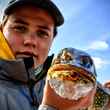
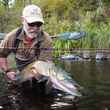




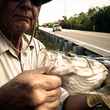



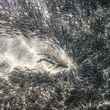
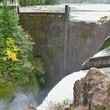








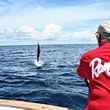
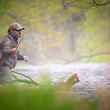



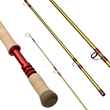

Comments
Jim replied on Permalink
This article is "bad science " based on opinion, conjure, and no common sense. Where is the data? Salmon and steelhead runs are impacted by dams, no question. In California our runs are sustained by our hatchery system. Our fishery will not recover until our Native American citizens STOP COMMERCIAL GILL NETTING . What happens when a steelhead or silver Salmon is caught in a gill net? They are tossed dead in the river as noncommercial by catch .
This article mixes apples and oranges: comparing a closed trout fishery, cutthroat vs brook trout competition, to anadoramous fisheries is inappropriate. Alaska fish issues being compared to California fish issues is inappropriate. Give us facts...I don't care what your opinion is.
Jim
Doug replied on Permalink
Jim, I totally agree with you regarding any gill net death traps. Also the lead article statement , “dams can easily be replaced by wind and solar “, is rather emotional instead of based on fact. Wind turbines require mass amounts of petroleum products to manufacture and lubricate , kill millions of birds annually, and cannot be recycled after their rather short lifespan. Tens of thousands of solar panes have been installed along the I-10 corridor between CA and AZ. I wonder at what cost to native plants and animals?
Chris replied on Permalink
Jim, we're going to disagree. Your baseline has shifted, and it's convenient to blame the most visible stressor (native netting). The real problem with California's salmon population isn't about who takes fish out, or who puts them in. It's all about habitat. Simple as that. If the state had the abundant runs from 60 or 70 years ago, the native harvest wouldn't be noticable. But, by exercising their treaty rights, their take now, with on-the-verge-of-extinction migrations, amplifies the audience. "Bad science?" More like inconvenient science.
Jim replied on Permalink
Hi Chris,
Thanks for your reply. Communication on these issues is very important. Yes, we disagree. Who takes fish from an endangered run is not important...but how those fish are taken and exploited in very important. No commercial salmon season in the ocean, no commercial salmon season in the rivers, no sport fishing...no problem. The Native Americans claim to be stewards of the land. Let them do their part. Habitat, as you say, is of the utmost importance. All Americans should do their share. Treaties are important. The salmon are more important. The whole sale slaughter of silver salmon and steelhead in the nets, and waste of the resource by dumping dead into the river, that I have witnessed has got to stop.
Richard K. Sanders replied on Permalink
"Robust population" is not defined relative to actual numbers vs health vs size per individual and is therefore vague. What is "overyielding" and how is this adverse?
Stocking fish into damaged ecosystems will never work. Pink salmon planting in the Pacific oceans is a fishing/canning industry program coopting state fish and game departments for financial benefit of the industry. It's not just petroleum and coal that "incentivize" governments to do their bidding. Planting fish by power companies is far cheaper than repairing environmental damage.
N Hiller replied on Permalink
Thank you for this article. It is spot on. Alaska is damaging the very ecosystem with the 2 Billion extra mouths to feed. The hatchery salmon overwhelm the fish we use for food. Valuable sockeye, Chinook salmon and also crab shrimp and clams and the entire food web that sustains this bounty. Density dependence in limited wild pastures has caused the wild fish to get smaller forced to share the limited forage with this enmass of hatchery fish. Hatcheries are a major factor in the demise of wild fish outnumbering them in mixed stock fisheries. These mixed stocks swimming together masks the smaller number of wild fish when scooped up together in the harvest. Monitoring is generally non existent, so our wild self perpetuating salmon are disappearing. A $16,000,000 dollar Alaskan Hatchery genetics study shows precisely what this article states. Hatchery fish are less than half as fit as wild fish. Alaska has some of the last wild salmon on earth but denial ignorance and greed is degrading wild stocks to follow in the footsteps of the Pacific NW. Once rich diverse genetics are losing resilience. Just like California leading to the inability to withstand drought and resilience against climatic shifts. Wild salmon have been to hell and back for 5,000,000 years. Hatcheries are as destructive as dams, logging and agriculture maybe more so.
Pages